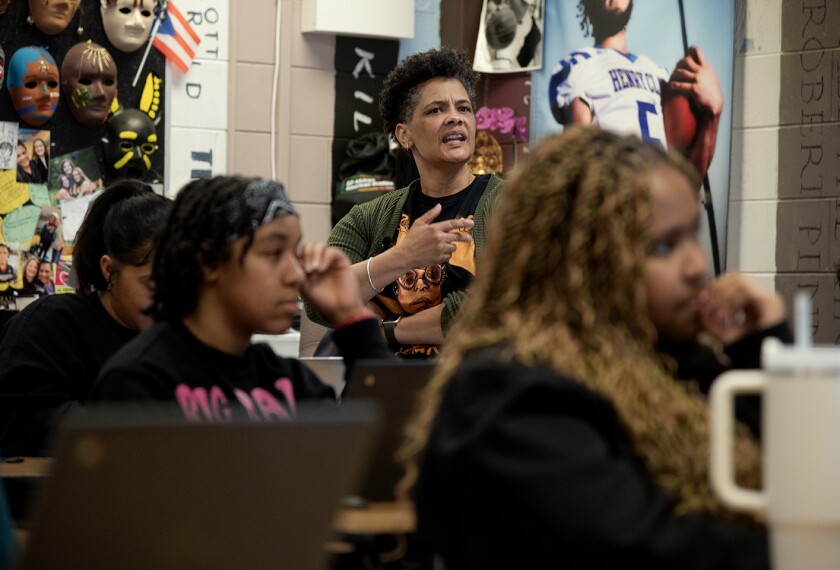Now that they have reached the age of 40, those who went to preschool are more likely to be employed, have higher incomes, and are less likely to have been arrested.
The recently released summary of the report “Lifetime Effects: The High/Scope Perry Preschool Study Through Age 40” concludes that in general the experiment’s long-term effects have been remarkably positive. (“Research Updates Lives of Perry Preschoolers,” Nov. 24, 2004.)
The Perry Preschool experiment operated from 1962 to 1967 in a poor, predominantly African-American section of Ypsilanti, Mich. Randomly assigned low-income African-American children received either first-rate preschool instruction or no preschool at all. Follow-up studies have been completed as the children reached ages 11, 14, 15, 19, 27, and now 40.
The newest findings are that children who attended the Perry Preschool tested at higher levels and were more likely to graduate from high school than were those from the group that did not have the preschool experience. Now that they have reached the age of 40, those who went to preschool are more likely to be employed, have higher incomes, and are less likely to have been arrested. They are also more likely to own their own homes and to be married. The literal bottom line is that an investment of $15,166 in preschool resulted in a return to society of $258,888, most of it—$171,473—from crime savings.
The researchers conclude that “high-quality preschool programs for young children living in poverty contribute to their intellectual and social development in childhood and their school success, economic performance, and reduced commission of crime in adulthood.” The implication drawn is that “all young children living in low-income families should have access to preschool programs that have features that are reasonably similar to those of the High/Scope Perry Preschool program.”
The data appear to be convincing, the conclusions clear, and the policy implications powerful. However, there are some points that are troubling. In spite of graduating from high school at spectacular rates—84 percent, significantly higher than the national average for non-Hispanic white males—the African-American females who attended the Perry Preschool did not experience an increase in their earnings. A high school diploma is not enough to make a difference.
The “crime savings” and associated higher incomes are in the main attributable to the males who attended the preschool. It is not that between preschool and age 40 they were not arrested or sent to jail—many were. It is simply that fewer became involved with the criminal-justice system than did among their non-preschool-attending peers. The researchers do not speculate why this is the case.
The literal bottom line is that an investment of $15,166 in preschool resulted in a return to society of $258,888, most of it—$171,473—from crime savings.
The study shows profound differences in educational outcomes for African-American men and women. Although the high school graduation rate for female participants in the program was remarkable, there was no significant difference in graduation rates between the males who went to preschool and those who did not (approximately 50 percent for both groups). The researchers attribute the failure of the Ypsilanti schools to graduate lower-income African-American boys who attended preschool at a rate similar to that of their sisters to differing reactions among teachers and school staff members to girls and boys whose academic performance improved. The girls were kept in mainstream classes, promoted regularly from grade to grade, and not assigned to special education programs. African-American boys who had attended the preschool, despite testing as well as the girls, were more frequently retained in grade and assigned to special education programs. As a result, their graduation chances were not improved by their preschool experience.
This may be because teachers and staff members focused primarily on classroom misconduct (more common in both groups of boys than in the girls), rather than on objective measures of academic performance, such as intellectual tests. For this reason, the intellectual gains made in preschool by the male program group may not have translated as expected to gains in high school graduation rate and other long-term indicators of educational success.
These gender and race differences in graduation rates and special education assignments are visible nationally. The latest High/Scope Perry Preschool Study is the best evidence available that the remarkably high rate of assignments of African-American boys to special education programs and retention in grade can be demonstrated to be based on nonacademic factors. The policy implications of this finding are that racial and gender differences in special education assignments at the school and district levels should be warning flags of the need for professional education for teachers and school staff, so that such assignments are made only for those who will benefit from them, and not for reasons that are rooted in racial and gender stereotypes.




